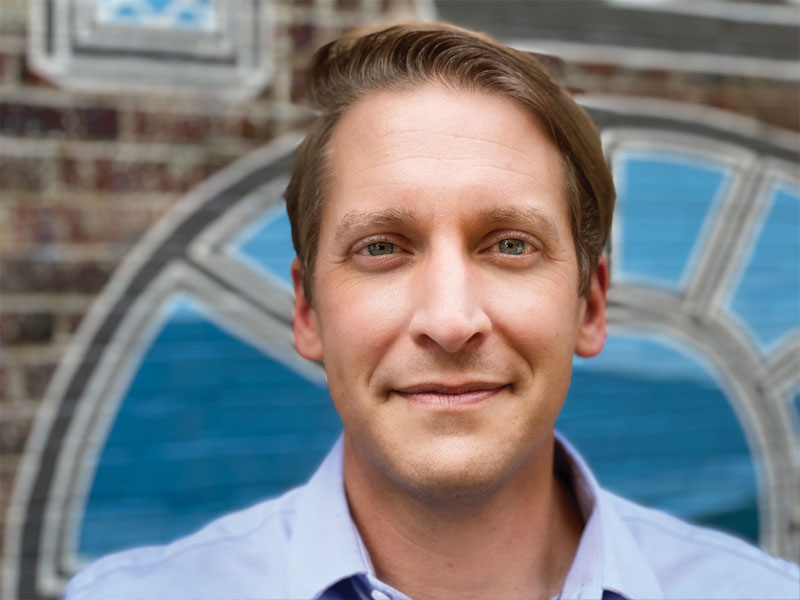I found that busyness — an over commitment to too many good commitments — is killing us physically, mentally, emotionally, and relationally. I believe busyness is something that your readers struggle with.
I am concerned for your life.
That’s what my doctor said to me in 2013.
At 36 years old, I had just told Dr. Tate four strange symptoms that I was experiencing:
- Exhaustion. No matter how much sleep I got, I felt weary.
- Heart palpitations. I would pour sweat and have difficulty breathing while checking email.
- Forgetfulness. People would entrust important information to me, and it would vanish from my mind.
- Chronic migraines. I had debilitating headaches three times each week.
Dr. Tate expressed concern over these four symptoms, but he wanted to dig deeper before a diagnosis. “Tell me about your commitments and what your life looks like.”
I told Dr. Tate the same thing that most of us say when someone asks us how we’re doing: “I’m busy, but it’s a good busy.”
He pressed, “What do you mean by busy?”
“I work about sixty hours per week leading a division in a nonprofit. I’m earning my doctorate in leadership, so I’m usually awake around 4:30. I travel sixty days each year between work and school.
“I’m married with three young kids, which requires a lot of attention. My wife and I are starting a program with our church to help develop leaders.
“And I’ve slowed down a lot over the last year. My Mom passed away, so I wanted to have space to grieve.”
That’s when Dr. Tate put his hand on my shoulder, looked me in the eyes, and said, “Garland, I am concerned for your life.”
I thought he was going to diagnose me with a terminal illness. Instead, he said, “You are stressed out.”
Flustered, I responded, “But I don’t feel stressed.
With a smile on his face, he said, “But your head does…three times each week.”
I countered. “I love my life. I like every part of it: my family, job, school, friends, and church. Why do you think I’m stressed?”
He responded, “Because you’re busy.”
I retorted, “I know I’m busy. It’s a good busy. Besides, everyone is busy.”
“You’re right. Everyone’s busy. And it’s killing us all.”
Busyness is so prevalent that the authors of The 5 Choices say, “Busyness is the existential claim of the 21st. century. I am stressed out. Therefore, I am.”
As a society, we assume that busyness must be good. We believe it makes us significant and in-demand. Busyness, in fact, wreaks havoc on our lives.
Busyness is an over commitment to too many good commitments. We have so many good commitments that it becomes bad.
Busyness is bad for you because of the toll it takes on you:
- Physically – it floods your body with adrenaline and cortisol and has been linked to multiple illnesses.
- Emotionally – it has been linked to burnout, which results in emotional exhaustion and a reduced sense of personal accomplishment.
- Mentally – it prevents you from focusing and distracts you from your highest priorities.
- Relationally – over commitment causes a condition known as depersonalization in which we resent the people whom we most care about.
Dr. Tate’s assessment shook me so deeply that I decided to spend the rest of my doctoral research focusing on busyness and its effects on leaders, teams, and companies.
I discovered that busyness is an attempt to get more out of life by squeezing more into it. Unfortunately, it has the opposite effect: it squeezes the life out of us and robs us of the joy of living.
In my research, I found five steps to kill busyness before it hurts you.
Step 1: Decide. Decide if busyness is worth the toll that it takes on you. If not, you choose to get (un)busy.
Step 2: Deconstruct. In the second step, you will deconstruct bad beliefs, habits, and commitments that trap you in busyness.
Step 3: Design. During this step, you design the life you want to live. You must create space for four critical elements of highly productive, (un)busy people: Relationships, Recreation, Rest, and Reflection.
Step 4: Develop. In this step, you develop habits and time management practices that help you stay (un)busy.
Step 5: Draw Others In. Once you are living an (un)busy life, you will draw in your family, friends, and coworkers to get (un)busy. Together, you’ll learn to stress less and accomplish more.
One of my favorite movies is The Shawshank Redemption. It tells the story of Andy, a man who was imprisoned for a crime he didn’t commit. Andy strikes up a great friendship with another prisoner, Red.
At one point in the movie, Andy tells Red about his dreams once he gets out of prison. Andy wants to move to Zihuantanejo in Mexico, have a boat on the Pacific Ocean, build a hotel, and enjoy his life.
Red, on the other hand, believes he couldn’t survive on the outside. He’s been in prison for so long that he had been “institutionalized.”
As Andy describes his dreams, Red says, “I don’t think you ought to be doing this to yourself, Andy. I mean, Mexico is way the hell down there. And you’re in here. And that’s the way it is.”
Andy agrees. “Yeah, that’s the way it is. It’s down there, and I’m in here. But I guess it comes down to a simple choice: Get busy living. Or get busy dying.”
That’s your choice now, too. But now you know the irony of that statement. Only when you live without busyness can you get busy living.
So, get busy getting (un)busy.
BIO:
Dr. Garland Vance energizes high achievers to live and lead intentionally. He is an author, speaker, coach and consultant who cofounded AdVance Leadership to help companies succeed by developing the current and future leaders they need to win.
After earning his doctorate in leadership, he authored Gettin’ (un)Busy, which Forbes named as “one of the seven books everyone on your team should read.”
He lives in Knoxville0, Tennessee with his wife of twenty years, Dorothy, their three kids and turtle.


